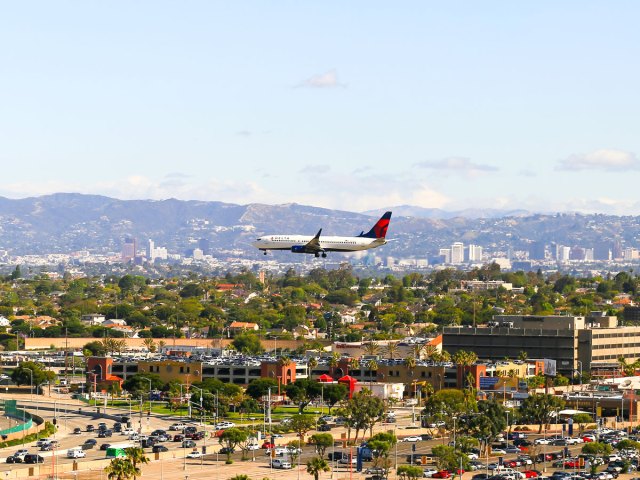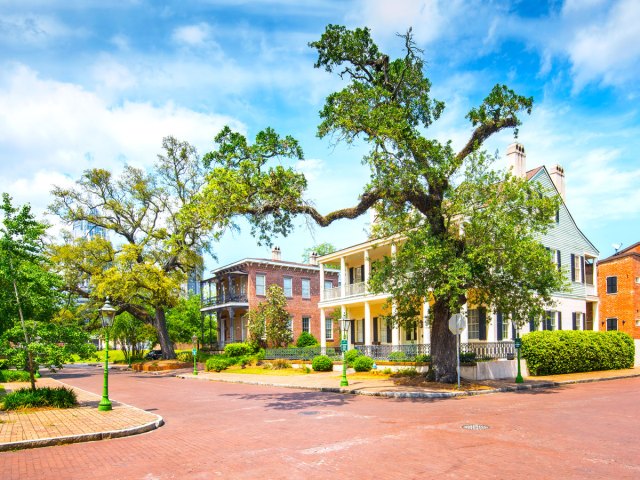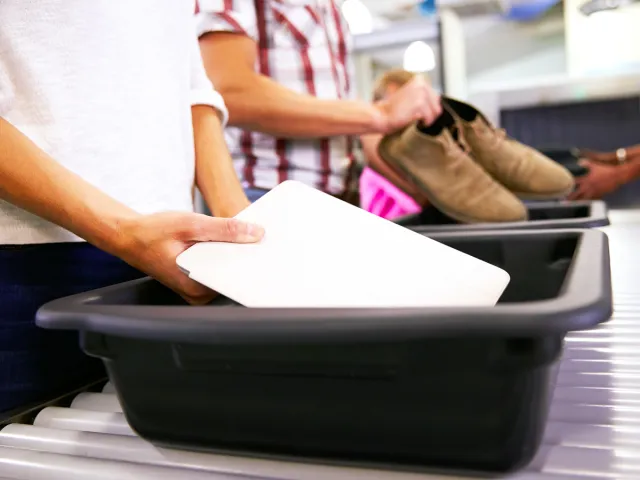Federal agencies measure airlines on their arrival and departure performance, according to when flights reach or leave the gate. But did you know a flight can arrive late and technically still count on time? In the U.S., a flight is counted as on time if it operated less than 15 minutes later than scheduled time. Despite this leeway, a significant proportion of flights to and from U.S. airports — typically around 20% to 25% — are still recorded as delayed. As travelers, we want to avoid being on one of them, so in that case, what should we book? Here are four helpful tips about the best times to fly to avoid flight delays.
When in Doubt, Choose an Early Morning Flight

Dragging yourself out of bed to catch a 6 a.m. flight is no fun, but statistically early mornings are the best time of day to fly if you’re looking to reach your destination on time. According to data published by the Bureau of Transportation Statistics (BTS), 6.5% of flights in September 2023 were delayed due to late-arriving inbound aircraft, the biggest single factor impacting on-time performance.
However, planes allocated to the first flights of the day usually arrive at the airport the night before. If you aren’t waiting on an inbound flight to arrive, that’s one less reason for your flight to be delayed. In addition, for crews that are just starting their working day, there’s a minimal chance they’ll already be over their permitted flying hours, which is another common cause of delays.
Of course, other issues can still arise. For instance, no matter what time of day you fly, there’s still a chance of a delay caused by baggage needing to be offloaded if someone doesn’t show up at the gate or a mechanical problem with the plane requiring an urgent repair. But if you can handle the early start, more often than not, this is the best way to improve your chances of traveling on time.
If You’re Flying in Summer, Avoid Afternoons

Outside of air carrier delays such as late-arriving aircraft, weather-related issues represent about a third of delays in the National Aviation System (NAS). And in some places, they can have quite an impact. When airports are affected by extreme meteorological conditions such as heavy wind, thunderstorms, tornadoes, blizzards, or hurricanes, then there’s a good chance of a delay.
In particular, if you’re flying in summer, you’ll want to avoid flying during the late afternoon and early evening. Heat builds during the morning can create large storm clouds later in the day in many parts of the U.S. As a consequence, the risk of thunderstorms is greater in the afternoons, so you should aim to avoid this part of the day to minimize your chance of being affected.
Disruption can be hard to predict, as planes can criss-cross the country during the day. Bad weather in another state might have an impact on your inbound flight, even if the skies are sunny where you are. It’s worth keeping an eye on this handy map from the Federal Aviation Administration (FAA) to see which airports are experiencing delays. Use the map in conjunction with information about your plane’s previous journeys from a flight-tracking site such as FlightRadar24.
Try to Time Your Flight for Midweek

You might have noticed flights tend to be cheaper midweek, which often reflects lower demand. Because of the typical workweek, many travelers like to fly at similar times. For example, if you’re planning a weekend away, you’ll likely depart on a Friday and return on Sunday. Similarly, if you’re planning a week away, you might choose to book it weekend to weekend.
This means that airports tend to be less busy midweek, especially on Tuesdays and Wednesdays. But the chance to snag a cheap flight shouldn’t be the only reason that tempts us to fly on these days. The reduction in passenger traffic means there’s likely to be less pressure on staff and systems, increasing the likelihood of an on-time departure.
Statistics from the BTS back this up, recording fewer delays midweek compared to weekends. In 2023, Tuesday was the best day of the week to fly with 80.5% of flights on time, closely followed by Wednesday (77.95%). In contrast, Friday fared relatively poorly, when only 74.64% of flights experienced no delay; Sunday was next worst (75.28%).
If You Can, Avoid Certain Holidays

Predictably, the worst time for flight delays is the time many of us need to take to the air: on holidays and during other peak periods. This is when delays relating to the National Aviation System (NAS) are most likely to kick in. The heavy traffic volume can have a negative impact on airport operations and air traffic control. For example, you might push back and have to hold short of the runway for a takeoff slot.
These hold-ups are compounded by a greater incidence of air carrier delays, such as baggage handling issues and delays in catering loading. It’s sometimes unavoidable, but if it fits your travel plans, you might choose to avoid these exceptionally busy periods by flying out a day earlier or later. And some holidays are worse than others for delays, with Independence Day travel and the period between Christmas and New Year faring particularly poorly.
In 2023, the Transportation Security Administration recorded its busiest travel day to-date on Friday, June 30, with a record 2.8 million passengers screened. The BTS reported that 27% of departing and arriving flights were delayed around the Fourth of July holidays, compared to 17% for trips made over the Memorial Day weekend. Looking back at 2022, you’d have had an 18% to 19% chance of not being on time if you flew somewhere for Thanksgiving, yet a 31% probability that a winter holiday flight was delayed.
More from our network
Daily Passport is part of Optimism, which publishes content that uplifts, informs, and inspires.























